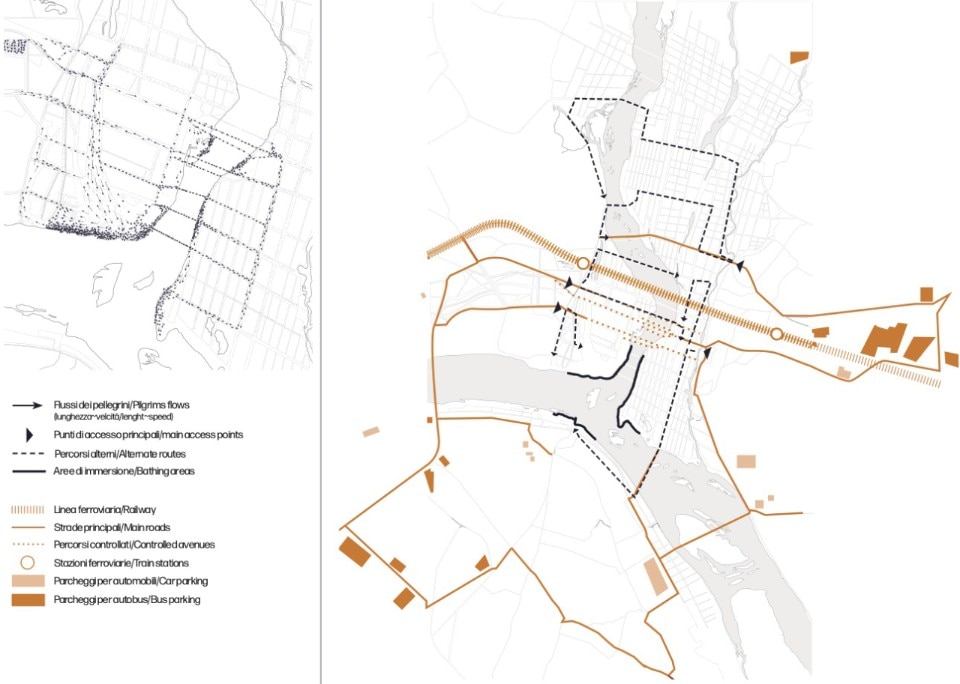“If you want to get close to God, you have to walk,” says 63-year-old Devi Prasad who has trekked hundreds of miles on foot from his village in the Indian state of Bihar to bathe at the confluence of the Ganges and Yamuna rivers. This man is one of more than 120 million pilgrims and tourists participating in the largest public congregation in the world – the Kumbh Mela. An event celebrated every three years in four different locations in rotation and every 12 years in Al- lahabad (Purna Kumbh Mela), this Hindu religious festival takes place where, according to legend, drops of the Amrit – the sacred nectar of immortality – were spilled from an urn (kumbh) being fought over by gods and demons. For the 2019 edition, the city of Allahabad (officially known as Prayagraj) is hosting the me- ga event, with myriads of Hindu devotees traveling from across India and beyond.
An intense flow of people is the defining feature of this event. Crowds of 10 to 30 million people arrive in 24-hour cycles on the six main bathing dates, between 15 January and 4 March, often after waiting days for their opportunity to bathe for a few seconds. To accommodate this massive human gathering, a temporary settle- ment is deployed in just three months, taking the shape of a proper urban environment – with over 300km o fstreets, nearly two dozen pontoon bridges, thousands of cotton tents and venues for spiritual meetings as well as social infrastructures such as hospitals and vaccination clinics. It is, in effect, the biggest ephemeral city in the world!
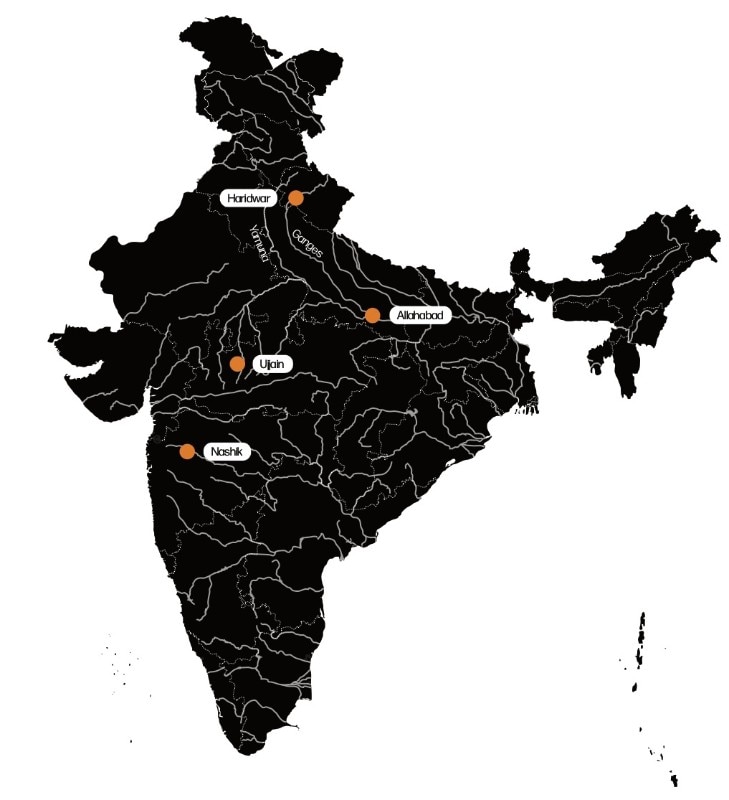
This camp, which replicates a real city in most aspects, is of extreme proportions and is erect- ed straight after the Ganges recedes when the monsoon is over. The settlement lasts as long as the festival, which is approximately 55 days. The aggregated units converge in an endless fabric of cotton, plastic, plywood and several other materials organised via a (smart) infrastructural grid. As a temporary city, the Kumbh is in continuous transformation. At each stage of deployment, dynamic activities and religious intensity drive the morphological expression and physical materialisation of this seemingly pop-up settlement which, in reality, is a premeditated operation.
Once the event is over, in a matter of days, the city is dismantled into parts that are reutilised or stored for future events.
As a fecund example of elastic urban design, it has much to teach us about planning and design, flow management, an accelerated urban metabolism and the rapid deployment of infrastructures but also about cultural identity, adjustment and elasticity in temporary urban conditions.
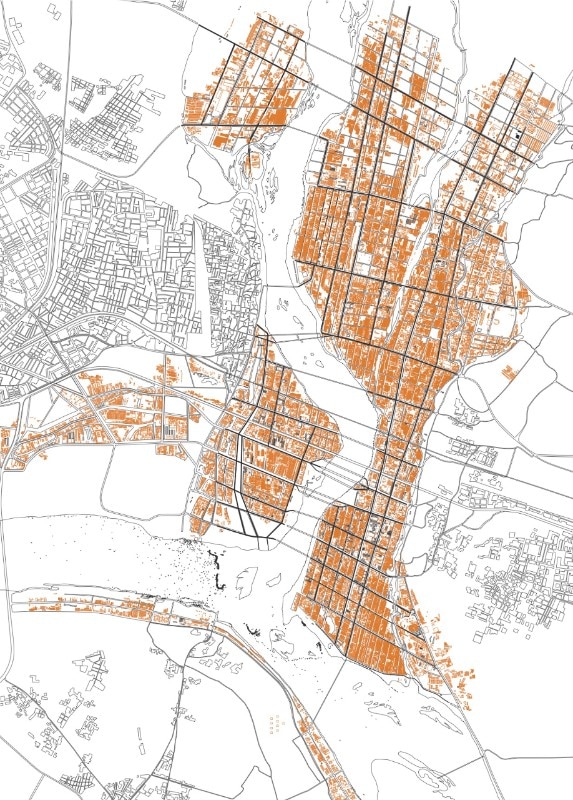
Via the repetition and incorporation of new knowledge after every festival, the administra- tion manages to cope with elevated levels and magnitudes of tension, functioning with an acceptable margin of error without collapsing. Indeed, one of the most interesting strategies of building resilience is a consistent tendency towards redundancy instead of optimisation, in terms of quantity, dimensions and the organ- isation of key infrastructure features.
The floating steel pontoon bridges connecting the two sides of the river, for instance, allow the grid to operate effectively in extreme conditions of flux. The distribution of the risk among sub-components is also conveyed in the way in which spatial substructures are organised within the settlement, or Nagri. Similarly to the way Le Corbusier’s plan for Chandigarh, for example, organises space in discrete subunits, the Kumbh Mela subdivides the area into basic operational units called “sectors”.
These self-organised cells form an interconnected network that supports the functioning of the city in a way that avoids systemic collapse in crisis situations.
The Kumbh Mela thus combines a top-down planning process with a bottom-up and community-centred approach. Unlike some of the other grids common to temporary cities, which by repeating a constant module deny singularity and identity, the allocation of space in the Kumbh occurs without any preconceived internal regulation of the religious communities. Each sector takes the form that most accurately expresses the community’s internal structure and identity, advocating for the emergence of spatial peculiarity.
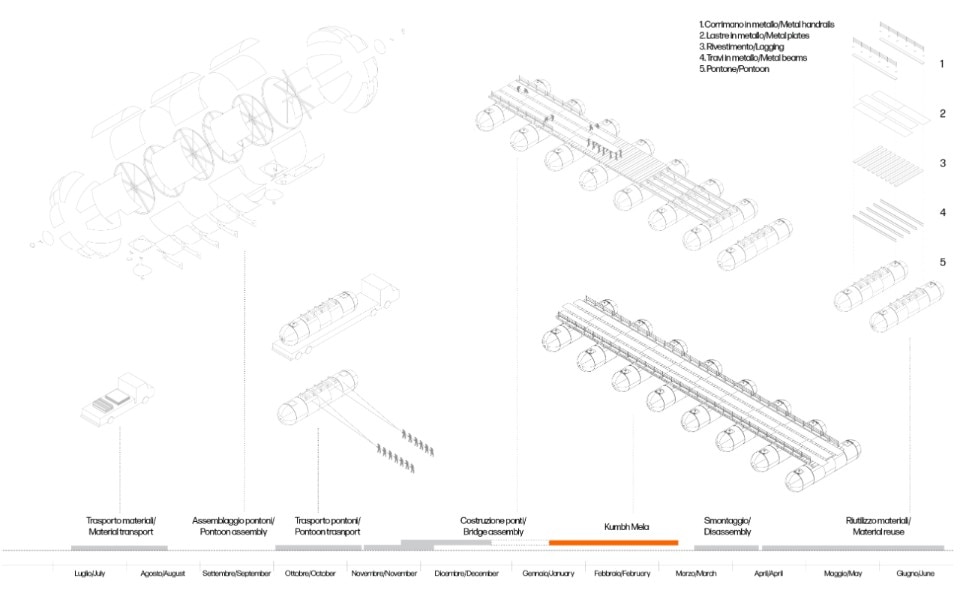
Therefore, when walking in the Nagri you can appreciate different sorts of spatial organisation – some more spontaneously and incrementally arranged and others more systematically structured.
This is how the grid’s neutralising potential to facilitate democratic self-expression is exploited in the planning strategies for this ephemeral megacity. An individual need to reshape the space is evident, for instance, as several gardens are carefully created in the 55 days, regardless of the fact that the settlement will be dismantled and all the efforts washed away by the river. From a perceptual point of view, for its users, the Kumbh Mela is about abnegating all attachment via the making of a provisional city.
The grid deployed to organise the settlement not only organises the residential space, it also coordinates multiple layers of infrastructures such as water, electricity, sewerage and trans- port. While the term “infrastructure” usually brings to mind heavy material constructions, at the Kumbh on the contrary clever processes of incremental aggregation develop a soft infrastructure.
Instead of being paved, for example, the roads are built with steel plates that can be carried by local workers without any heavy machinery. Being easily dismantled, the ephemeral megacity can then recycle most of its construction materials and reintroduce them into the regional economy once the festival is over.
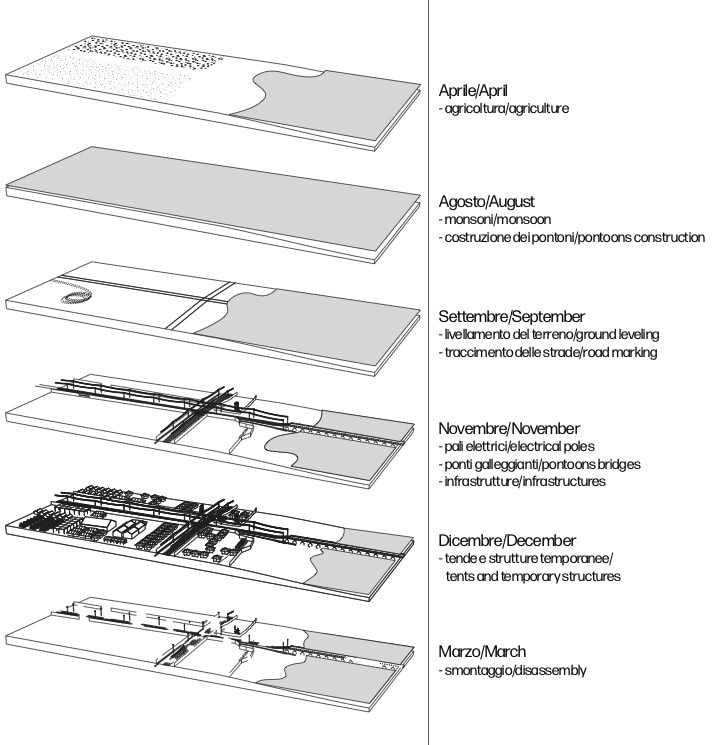
This extreme form of informal engineering is also expressed in the way the flows of pilgrims are handled. What look like spontaneous processing routes are, in fact, highly regulated processes. Over the years, technology has been in- troduced to help manage the event’s safety. Besides 1,400 CCTV surveillance cameras, for the first time this year artificial intelligence is being used for crowd control and video analytics to monitor movement across the 32 km2 of the area used for the Kumbh Mela.
As an extreme case of ephemeral urbanism, the Kumbh Mela demystifies and presents a distilled narrative surrounding the deployment of a city. The issues negotiated are as diverse as memory, geography, infrastructure, sanitation, public health, governance and ecology. These parameters express their design potential by offering alternatives, not only allowing a rethinking within the boundaries of transient urbanism but also of how to embed softer and yet perhaps more robust systems in permanent built envi- ronments. There is much to learn from this short- lived megacity, both for growing urban areas and those in the process of shrinking. This example celebrates both expansion as well as reversibility in a most poetic, pragmatic and sustainable manner.
Rahul Mehrotra is professor of Urban Design and Planning at the Harvard Graduate School of Design and the founder of the Mumbai-based firm RMA Architects.
Felipe Vera is a Director of the Center for Ecology, Landscape and Urbanism and an Associate Professor at the DesignLab of Universidad Adolfo Ibañez in Chile.
Stefano Andreani is a lecturer in Architecture at the Harvard Graduate School of Design and a designer and consultant at Invivia in Boston.


